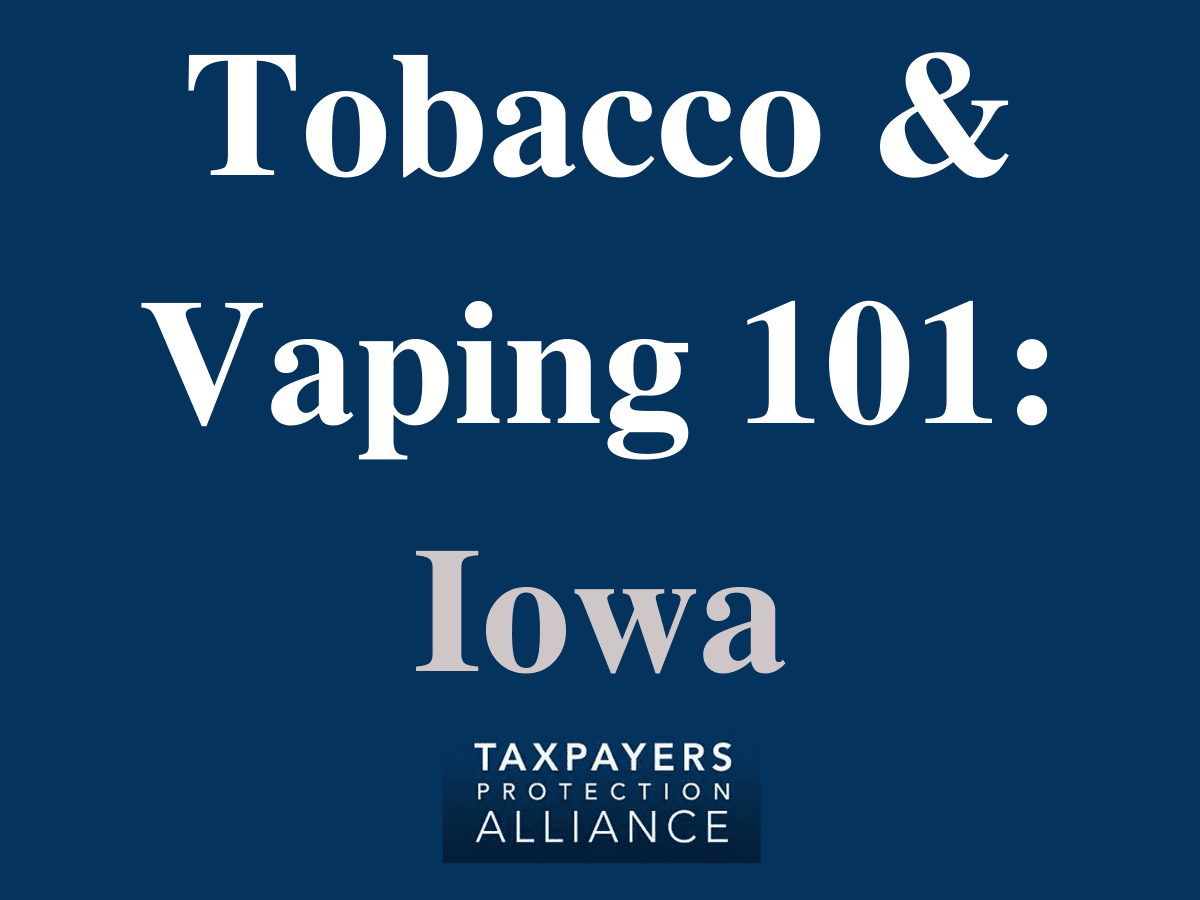
Tobacco & Vaping 101: Iowa
Taxpayers Protection Alliance
January 18, 2024
Lawmakers are often bombarded with misinformation on the products used by adults in their state. This annual analysis provides up-to-date data on the adults who use cigarettes and e-cigarette products in the Hawkeye State. This information aslo includes data on youth use, impacts of e-cigarettes and analyses of existing tobacco monies.
Key Points:
- In 2022, 363,976 Iowa adults (14.7 percent) were currently smoking. This is a 0.7 percent increase from 2021 and represents 5,297 additional adults smoking.
- In 2022 (among all Iowa adults), eight percent of 18- to 24-year-olds, 18.5 percent of 25–44-year-olds, 18.6 percent of 45–64-year-olds, and 8.5 percent of adults aged 65 years or older were currently smoking combustible cigarettes.
- Among all adults earning $25,000 or less in 2022, 31 percent were currently smoking compared to only 8.4 percent of adults earning $50,000 or more.
- Among all smoking adults in Iowa in 2022, 86.3 percent were White, five percent were Hispanic, 4.6 percent were Black, 3.8 percent were Multiracial (non-Hispanic), and less than one percent were Asian.
- In 2022, 165,894 Iowa adults (6.7 percent) were currently using e-cigarettes. This is a 4.7 percent increase from 2021 and represents 33,232 additional adults vaping.
- Among all vaping adults in Iowa in 2022, 37.8 percent were 18 to 24 years old, 42.4 percent were 25 to 44 years old, 17.2 percent were 45 to 64 years old and 2.5 percent were 65 years or older.
- In 2021, for every one Iowa high school student who was smoking, more than 56 adults were currently using cigarettes.
- In 2021, for every one Iowa high school student who was vaping, more than five adults were currently using e-cigarettes.
- The introduction of e-cigarettes has not led to increases in cigarette smoking, but rather, correlates with significant declines in smoking rates among young adults.
- Between 2018 and 2022, smoking rates among Iowa adults aged 18 to 24 years old decreased by 44.4 percent.
- Cigarette excise taxes in Iowa disproportionately impact low income, low education persons, while failing to significantly reduce smoking rates among that class.
- The percentage of Iowa adults earning $25,000 or less that were smoking increased by 7.7 percent between 2007 and 2022, while the percent of adults earning $50,000 or more that were smoking decreased by 49 percent during the same period.
- Among Iowa adults who did not graduate high school, smoking rates decreased by 23.5 percent, yet rates among adults with a college degree decreased by 48.9 percent.
- Iowa woefully underfunds programs to prevent youth use of tobacco and/or vapor products and help adults quit smoking, while simultaneously receiving millions of dollars from the pockets of the adults who smoke. In 2022, for every $1 the state received in tobacco monies, it spent $0.02 on tobacco control efforts.
See the full analysis below:
Powered By EmbedPress
